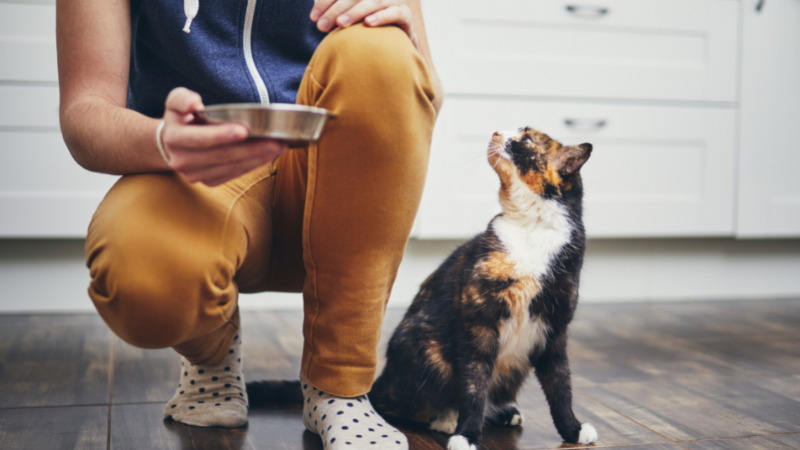
8 Common Dangerous Foods for Cats
My cat was named Indiana Jones, and like his namesake he liked to take risks. He was a counter jumper. As a young veterinarian, I learned how to keep a clean kitchen thanks to Indiana and his antics.Throughout the home there are many things that could be dangerous to your cat, and some may surprise you! If you have a young adventurous kitty, or an old curious cat, you’ve probably already gotten into the habit of keeping a clean kitchen for your pet’s safety. Keep reading to learn more about your cat and the groceries in your kitchen.
Dangerous Foods for cats
Grapes and Raisins
Cats and dogs can develop acute kidney failure after eating grapes, raisins, and currants. The cause is still unknown, however recently a dog that ate homemade playdough pointed researchers towards the ingredient cream of tartar.The ASPCA Animal Poison Control Center found that certain compounds in cream of tartar were a potential source of toxicity. Research for the cause is ongoing, but we know for a fact that grapes, raisin, currants, and tamarinds are harmful foods for cats.
Onions and Garlic
Most cats don’t like the taste of raw onions and garlic. That doesn’t stop them from eating foods like soups, gravies or any other human foods (like meat-based baby foods) they can get their paws on.Onions or garlic can be dangerous to your cats, and could cause anemia, lethargy, or collapse if eaten in large quantities. If you need to purchase parasite controls for your pet, make sure garlic isn’t an ingredient. They are ineffective and may be harmful if given in large enough quantities.
Chocolate
Chocolate contains a stimulant called theobromine and caffeine. Health issues that can result from eating chocolate can include:- Vomiting
- Diarrhea
- Heart rhythm problems
- Rare cases of neurological problems. A toxic dose for cats is similar to dogs: the darker the chocolate, the higher the amount of the toxic ingredients. Luckily, most cats do not have a sweet tooth and are less likely to eat chocolate treats.
Foods that include Cannabis
Cats are more likely to experience negative effects from cannabis if smoke is blown into their face but eating it can also be dangerous. If exposed, your cat may drool, have problems swallowing, vomiting, and alternate between agitation, potential hallucinating, and stupor.Tuna
Your cat probably loves the taste of tuna, and it’s fine to give as an occasional treat. But be careful with how much you give them. Feeding tuna as a primary protein source can lead mercury poisoning and nutritional problems like thiamine (Vitamin B1) deficiency.Dairy Products
As much as cats like the taste of milk, many are lactose intolerant and may develop diarrhea and other digestive issues. Kittens should be offered specialized kitty milk replacers to get all the nutrients they need and prevent tummy upsets.Raw meat and Eggs
While some cats require a homemade diet to stay healthy, “lightly cooking” meat and eggs to kill food-borne bacteria and parasites including E-coli, Salmonella, and Toxoplasma is recommended. Most cats receive a balanced and complete nutrition from a good-quality commercial diet of wet and dry cat food.Dog Food
Your cat may enjoy the texture and bigger kibble of their canine counterpart’s supper. But it is important to know that dogs and cats require different nutrients from their food.Dogs are omnivores, which means they can eat a balance of animal and plant food to get the nutrients they need. Cats on the other hand, are carnivores and have higher needs for critical vitamins and amino acids like taurine and arginine which are found in meat. Cats fed only dog food over a long period of time will become malnourished and could even lose their sight.
Prevent Access to Dangerous Foods
Here are some additional ways you can keep your cat away from dangerous foods:- Cover food on the counter when eating a meal – your cat could hop up and steal food or start licking something while you’re eating!
- Store food in cat-proof containers
- Put all food in cabinets that can’t be reached or opened by your cat
- Train your cat to never go on the kitchen counter
Play hide and seek outside of the kitchen by leaving small saucers of treats in other areas of the home. Or move a remote kibble dispenser from room to room, so your cat is always on the move and searching for food outside of the kitchen.
